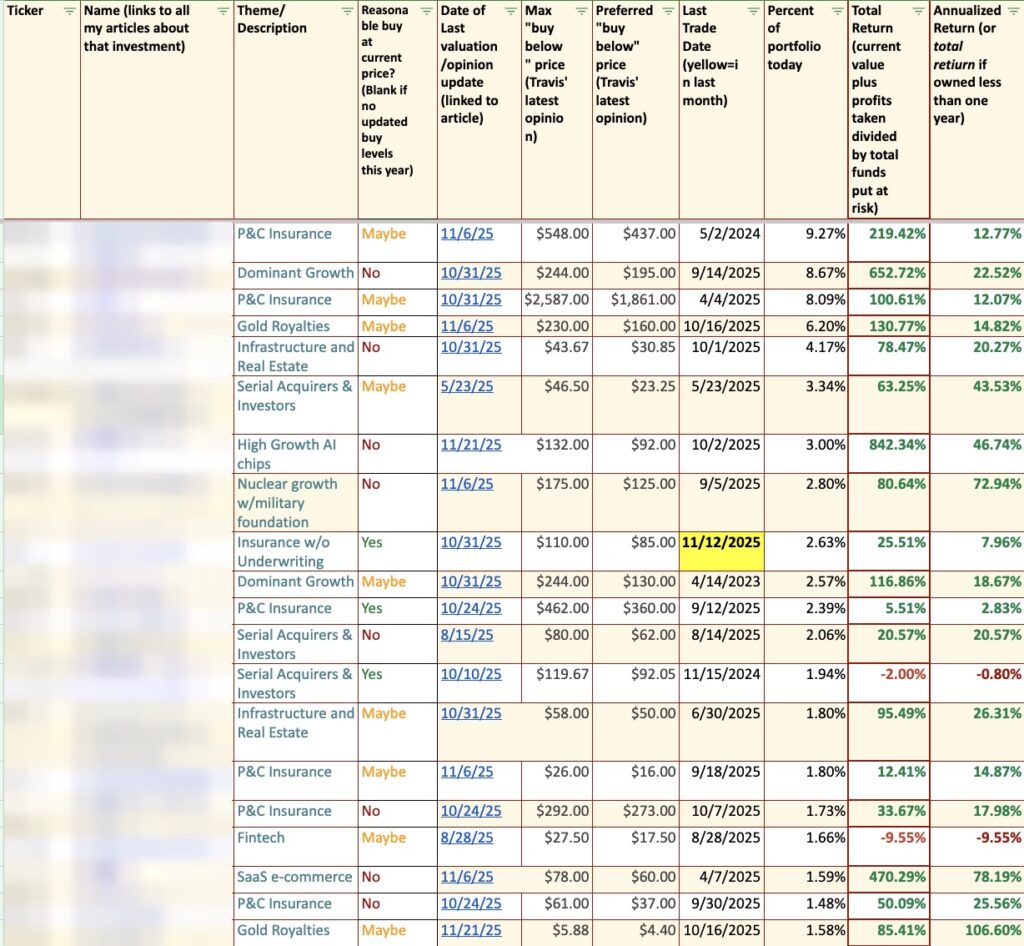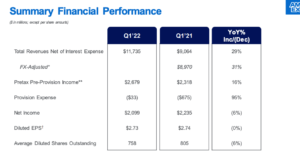Good Friday evening to all of you here on r/stocks! I hope everyone on this sub made out pretty nicely in the market on this final trading week of 2022, and are ready for the new trading year ahead. 🙂
Here is everything you need to know to get you ready for the trading week beginning January 2nd, 2023.
Stocks slipped on Friday to end a brutal 2022 with a whimper, as Wall Street wrapped up its worst year since 2008 on a sour note.
The Dow Jones Industrial Average slid 73.55 points, or 0.22%, to close at 33,147.25. The S&P 500 shed 0.25% to end at 3,839.50. The Nasdaq Composite ticked down 0.11% to 10,466.88.
Friday marked the final day of trading in what has been a painful year for stocks. All three of the major averages suffered their worst year since 2008 and snapped a three-year win streak. The Dow fared the best of the indexes in 2022, down about 8.8%. The S&P 500 sank 19.4%, and is more than 20% below its record high, while the tech-heavy Nasdaq tumbled 33.1%.
Sticky inflation and aggressive rate hikes from the Federal Reserve battered growth and technology stocks and weighed on investor sentiment throughout the year. Geopolitical concerns and volatile economic data also kept markets on edge.
“We’ve had everything from Covid problems in China to the invasion of Ukraine. They’ve all been very serious. But for investors, it is what the Fed is doing,” said Art Cashin, director of floor operations for UBS, on CNBC’s “The Exchange.”
As the calendar turns to a new year, some investors think the pain is far from over. They expect the bear market to persist until a recession hits or the Fed pivots. Some also project stocks will hit new lows before rebounding in the second half of 2023.
“I would love to tell you that it is going to be like the ‘Wizard of Oz’ and everything is going to be in glorious color in a moment or two. I think we may have a bumpy first quarter, and depending on the Fed it may last a little longer than that,” Cashin said.
Despite the yearly losses, the Dow and S&P 500 did break three-quarter losing streaks in the final three months of the year. The Nasdaq, however, dominated by the likes of Apple, Tesla and Microsoft, muddled through its fourth consecutive negative quarter for the first time since 2001. All three averages are negative for December, however.
Communication services was the worst performing sector in the S&P 500 this year, falling more than 40%, followed by consumer discretionary. Energy was the only sector to rise, climbing 59%.
This past week saw the following moves in the S&P:
S&P Sectors for this past week:
Major Indices for this past week:
Major Futures Markets as of Friday’s close:
Economic Calendar for the Week Ahead:
Percentage Changes for the Major Indices, WTD, MTD, QTD, YTD as of Friday’s close:
S&P Sectors for the Past Week:
Major Indices Pullback/Correction Levels as of Friday’s close:
Major Indices Rally Levels as of Friday’s close:
Most Anticipated Earnings Releases for this week:
(CLICK HERE FOR THE CHART!)
(T.B.A. THIS WEEKEND.)
Here are the upcoming IPO’s for this week:
Friday’s Stock Analyst Upgrades & Downgrades:
One Year’s Loss Is Not the Next Year’s Gain
It’s finally the last trading day of what has been a tough year for most asset classes, especially equities. As of this writing, the S&P 500 is on pace to finish the year with a 19.83% loss. Over the course of the index’s history, there have only been nine other years in which the S&P 500 has fallen at least 15% for the full year. Of course, turning the page of the calendar does not mean all the issues dragging stocks lower magically go away, and a big decline one year does not in and of itself mean we’re due for a big gain the next year.
In the chart below we plot the annual percentage change of the S&P 500 versus its move the following year. Taking a linear regression shows that performance one year is not a good explainer for next-year performance with a miniscule R squared of 0.0003. Looking just at those years where the S&P fell 15%+, five times the index posted gains the next year, while four times the index posted further declines.
Let’s Look at Stocks Down Two Years in A Row
As bad as 2022 has been for investors, there is a silver lining: back-to-back declines in the S&P 500 are rarer than you may think.
If you go all the way back to 1950, the only times that stocks fell in back-to-back years were during the vicious recession of 1973/1974 and then three years in a row during the tech bubble implosion of the early 2000s. Fortunately, we don’t see similar scenarios within the current environment, so I think the odds could favor a snapback in 2023.
Taking a closer look into the data, we found:
The year after, a negative return saw the S&P 500 up 15% on average and higher 80% of the time.
A 10% (or greater) loss showed the following year up only 8.5% on average and higher 63.6% of the time.
Out of the 20 negative years, only three times did returns get worse the following year (in 1974, 2001, and 2002).
However, the following year, significant losses were rewarded as 20% or more declines saw the next year higher all three times and up 27.1% on average (in 1975, 2003, and 2009).
Somewhat surprising to me is the year after a positive year, the returns were only 7.1% on average and higher 68.6% of the time. Take note that the average year since 1950 gained 9.5% and was higher 71.2% of the time.
As we head into 2023, we are putting the finishing touches on our Outlook 2023, be on the lookout for it early next year.
What Happens When Everyone Agrees That Stocks Will Fall?
“It’s not what you look at that matters; it’s what you see.” Henry David Thoreau
I’ve done this for more than two decades, and I have to say, the general consensus remains that the first half of next year will be rough for stocks, while the second half of the year should be better. But let’s be clear, overall, the general consensus is that next year will be rough for investors (as we explained here).
The last time I can recall everyone agreeing on something like this was in 2012 and the fiscal cliff drama. Seriously, it is all anyone talked about in the second half of 2012, and the big worry was that it would wreak havoc on stocks and the economy in the first half of 2013 and beyond. Guess what happened? Stocks soared nearly 30% in 2013, and the economy did just fine.
You see, the stock market is always pricing things in, and if everyone is talking about it, you better believe the stock market is aware. As Lou Holtz once said, “Life is 10% what happens to you and 90% how you respond to it.” We are in the midst of one of the worst years ever for investors, and the general consensus is that next year will be bad, also. So the question is, how are we supposed to respond to this?
What amazes me is how bearish everyone is. Yet, we have inflation coming down very quickly, an economy (while notably slowing, for sure) that we believe is not likely to be headed to a recession (in part, thanks to a very strong consumer), and some of the historically best times to invest based on the calendar.
That’s right, the first quarter in a pre-election year has been positive an incredible 17 out of 18 times going back to 1950. Oh, it was also up 7.4% on average (the very best quarter out of the entire four-year Presidential cycle). On top of that, the second quarter has also performed quite well, too. So, we potentially have an interesting situation brewing here, and I sure don’t hear too many people pointing out any of the more optimistic news or perspectives.
Now go back to the quote at the very beginning about what you look at versus what you see. To me, I look at all the worries and concerns as everyone else, but what I see is the potential for a surprise rally that not many are expecting.
2022 Solidified as the Worst Year for Sentiment
As we noted in an earlier post, today’s release of the AAII survey gives us the final reading of the year on sentiment, solidifying a number of points as to just how dour the investor outlook has been.
For starters, the bull-bear spread heavily favors bears, and that has been the case for some time now. As shown below, the spread has been negative (meaning a higher share of respondents are reporting as bearish than bullish) for a record 39 weeks in a row- over a month longer than the previous record which occurred recently in 2020.
Across all weeks in 2022, bullish sentiment averaged a reading of merely 24.73%. Since the survey began in 1987, that is a record low. In fact, the previous lowest readings were a few percentage points higher at 27.29% and 27.08% in 1988 and 1990, respectively. Meanwhile, the average reading on bearish sentiment was historically elevated at a record of 46.2%, surpassing the prior record set in 2008 by one percentage point. Prior to 2008/2009, only 1990 saw a very high average reading for bearish sentiment.
As we highlighted in an earlier tweet, given the low readings on bullish sentiment, there was not even a single week this year in which bullish sentiment came in above its historical average of 37.63%. Of course with a low share of survey respondents reporting as bullish, a larger share would be reporting as bearish. To match the impressive reading with no weeks seeing above-average bullish sentiment, nearly every week this year (51) has seen bearish sentiment come in above its historical average of 31%, tying the record high set in 2009.
As previously mentioned, bullish sentiment averaged a reading below 25% this year. Given that reading, it should come as no surprise that 2022 also saw a record number of weeks (30) with bulls below 25%. Prior to this year, 1988 (one year after the survey began) was the prior record at 23 weeks. In other words, this year there were nearly two months more in which less than a quarter of investors reported as bullish than the previous record. Additionally, there had been 17 weeks in which over half of the responses were bearish. Similar to the number of weeks in which bearish sentiment was above average, that ties 2008 for the record high.
Grinch visits Wall Street on Last Trading Day of Year
Last-minute tax-loss selling, old sayings such as “year ends make great exits,” a desire to start with a clean slate, who knows exactly the answer, but the last trading day of the year has turned bearish over the last twenty-two years. Since 2000, NASDAQ and Russell 2000 have the worst records. On the last trading day of the year, NASDAQ has been down in sixteen of the last twenty-two years after having been up twenty-nine years in a row from 1971 to 1999. DJIA and S&P 500 have also been struggling recently and exhibit a bearish bias over the last twenty-two years. Russell 2000’s record very closely resembles NASDAQ, gains every year from 1979 to 1999 and only six advances since.
Country ETFs in 2022
Earlier today we published our Global Macro Dashboard which provides an overview of the main economic and market data of 22 major global economies. In the table below, we show the recent performance of the ETFs tracking those same countries.
With 2022 drawing to a close, there are only two countries that are currently in the green for the year: Brazil (EWZ) and Mexico (EWW). Neither are up much, but up is up, especially in a year like this one.
In terms of month-to-date change, Hong Kong (EWH) has risen the most with a 5.62% gain, while China (MCHI) is up a modest 0.46%. On the other end of the spectrum, Taiwan (EWT) has fallen sharply with an over 20% decline, but most of that drop is actually due to a $5.18/share long-term capital gain that the fund paid out earlier this month.
Pre-Election Year Januarys Stellar – #1 S&P 500 and NASDAQ, #2 DJIA
January has quite a reputation on Wall Street as an influx of cash from yearend bonuses and annual allocations has historically propelled stocks higher. January ranks #1 for NASDAQ (since 1971), but sixth on the S&P 500 and DJIA since 1950. January is the last month of the best three-consecutive-month span and holds a full docket of indicators and seasonalities.
DJIA and S&P rankings did slip from 2000 to 2022 as both indices suffered losses in thirteen of those twenty-three Januarys with three in a row in: 2008 to 2010, 2014 to 2016 and then again from 2020 to 2022. January 2009 has the dubious honor of being the worst January on record for DJIA (-8.8%) and S&P 500 (-8.6%) since 1901 and 1930 respectively. Covid-19 spoiled January in 2020 & 2021 as DJIA, S&P 500, Russell 1000 and Russell 2000 all suffered declines in 2020. In 2021, DJIA, S&P 500 and Russell 1000 declined. In 2022, surging inflation, reaching multi-decade highs, stoked fears of substantially higher interest rates in January.
However, in pre-election years, Januarys have been outright stellar ranking #1 for S&P 500, NASDAQ, Russell 1000, and Russell 2000 and #2 for DJIA. Average gains range from 3.4% by Russell 1000 to a whopping 6.8% for NASDAQ. DJIA and S&P 500 have only declined twice in pre-election Januarys, 2015 and 2003.
Falling FAANG+
Yesterday Amazon (AMZN) became the third of the mega-cap FAANG+ stocks (along with META and NFLX) to close below its closing low made during the COVID Crash in March 2020. Not only have all of AMZN’s post-pandemic gains been erased, but it’s now trading below its lowest close made during the COVID Crash!
NYSE’s FAANG+ index is described as an index of “10 of today’s highly-traded tech giants.” Given that most of the FAANG+ stocks account for a massive portion of the market cap weighted S&P 500, they are an impactful group. As shown below, the FAANG+ index peaked in early November last year and has dropped 46% since then. The drop more recently follows a failed breakout above the top of its downtrend channel as the index is now back to within 5% of this past November’s low. On a relative basis, the group has been underperforming the broader market for even longer with a high in February of last year.
Below is a look at the ten FAANG+ stocks. As shown, they came into the year with a combined market cap of $12.3 trillion, and they’re ending the year with a combined market cap of just over $7 trillion. While Apple (AAPL) has fallen the least YTD in terms of share price change, it has lost the most in market cap at $844 billion. Amazon (AMZN) has seen its market cap fall the second-most at $843 billion, essentially getting cut in half. Tesla (TSLA), along with AMZN, is one of two names that lost their “$1 trillion market cap” club status this year. TSLA is now down 69% on the year, and its market cap has fallen from $1.06 trillion down to just $344 billion. The other FAANG+ stocks that are down 50%+ on the year include Meta (META), NVIDIA (NVDA), Netflix (NFLX), AMD, and Snowflake (SNOW).
With markets continuing to drop in these final trading days of December, on an absolute basis, 2022 is going to go down as the biggest year of wealth destruction ever for the US equity market. In 2008, the Russell 3,000 saw its market cap fall by $6.7 trillion. As of today, the Russell 3,000’s market cap has fallen about $11.2 trillion so far in 2022. $5.2 trillion of that $11.2 trillion decline has come from just the ten FAANG+ stocks shown below.
Here are the most notable companies reporting earnings in this upcoming trading week ahead-
(CLICK HERE FOR NEXT WEEK’S MOST NOTABLE EARNINGS RELEASES!)
(T.B.A. THIS WEEKEND.)
(CLICK HERE FOR NEXT WEEK’S HIGHEST VOLATILITY EARNINGS RELEASES!)
(T.B.A. THIS WEEKEND.)
(CLICK HERE FOR TUESDAY’S PRE-MARKET NOTABLE EARNINGS RELEASES!)
(N/A.)
Below are some of the notable companies coming out with earnings releases this upcoming trading week ahead which includes the date/time of release & consensus estimates courtesy of Earnings Whispers:
Monday 1.2.23 Before Market Open:
(CLICK HERE FOR MONDAY’S PRE-MARKET EARNINGS TIME & ESTIMATES!)
(NONE. U.S. MARKETS CLOSED IN OBSERVANCE OF NEW YEAR’S DAY.)
Monday 1.2.23 After Market Close:
(CLICK HERE FOR MONDAY’S AFTER-MARKET EARNINGS TIME & ESTIMATES!)
(NONE. U.S. MARKETS CLOSED IN OBSERVANCE OF NEW YEAR’S DAY.)
Tuesday 1.3.23 Before Market Open:
Tuesday 1.3.23 After Market Close:
Wednesday 1.4.23 Before Market Open:
(NONE.)
Wednesday 1.4.23 After Market Close:
Thursday 1.5.23 Before Market Open:
Thursday 1.5.23 After Market Close:
Friday 1.6.23 Before Market Open:
Friday 1.6.23 After Market Close:
(CLICK HERE FOR FRIDAY’S AFTER-MARKET EARNINGS TIME & ESTIMATES!)
(NONE.)
(T.B.A. THIS WEEKEND.)
(T.B.A. THIS WEEKEND.) (T.B.A. THIS WEEKEND.).
DISCUSS!
What are you all watching for in this upcoming trading week?
I hope you all have a wonderful long 3-day holiday weekend and a great trading year ahead r/stocks. 🙂















